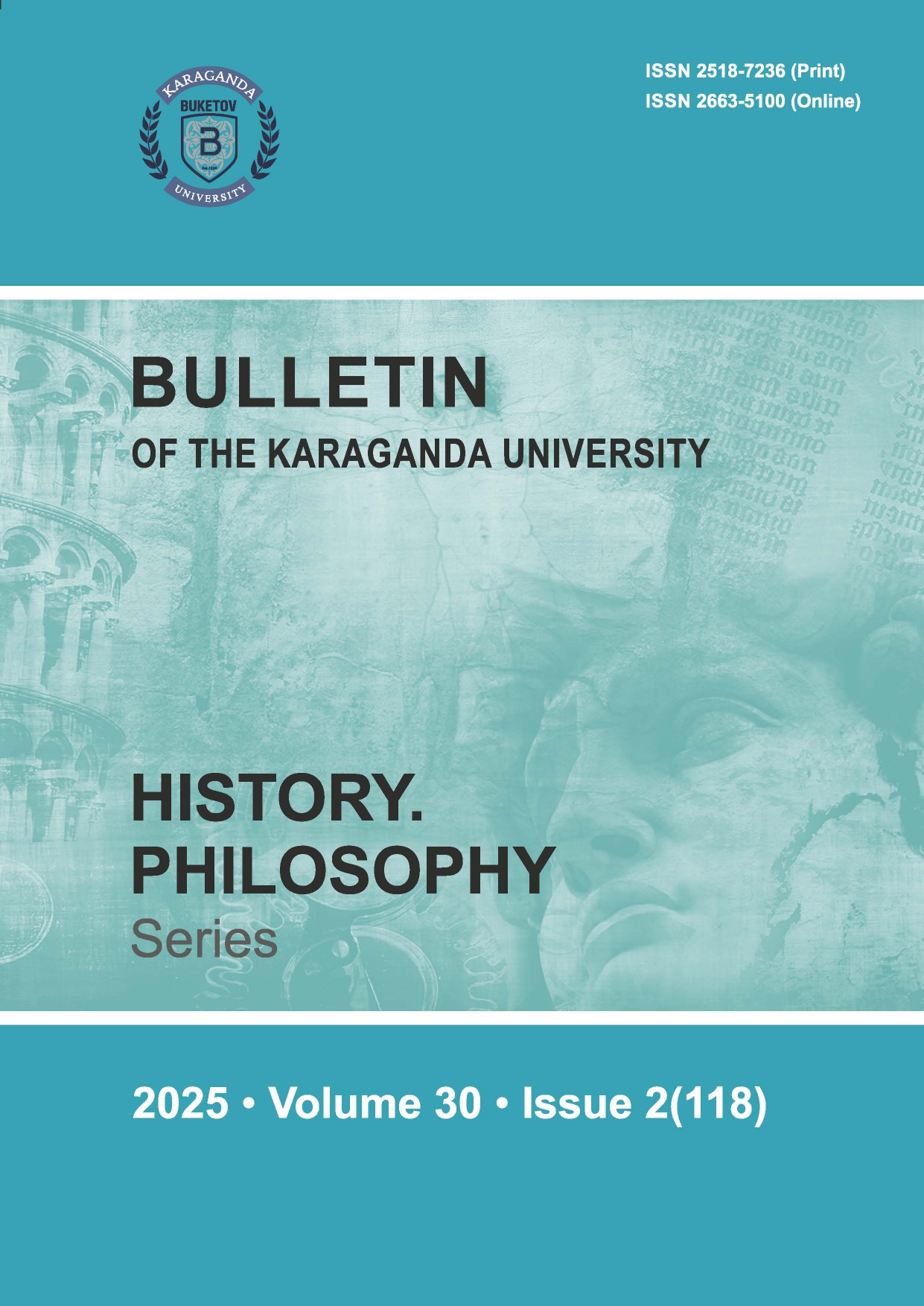The History of the Sedentarization of the Kazakhs of Northern Kazakhstan in the 1930s: What do the Archival Documents Testify?
DOI:
https://doi.org/10.31489/2025hph2/17-28Keywords:
sedentarization, point of sedentarization, Nnomadic and Semi-Nomadic Kazakhs, North Kazakhstan, Nomadic escapeesAbstract
The article analyzes an under-researched problem of the history of Northern Kazakhstan in the XX century —
the transition of nomadic and semi-nomadic Kazakh families to a sedentary way of life in the 1930s. This
process of forceful sedentarization, included in the agrarian policy of the Soviet state and Communist party, combined with collectivization and the elimination of the Bai as a class, radically changed the lifestyle of Kazakhs. It is also known that the agrarian policy of the Soviet authorities in Kazakhstan in the early 1930s led to an acute social crisis situation resulting in famine and mass migrations. The purpose of this study is to analyze the process of forced sedentarization of nomadic and semi-nomadic farms in several administrative districts of Northern Kazakhstan in the period from 1930 to 1932.The article contains information on the process of settling, including the number of farms, timing and progress of settling in several districts, such as Kokchetav, Atbasar and Akmola. This article examines the role and actions of local authorities in organizing sedentarization points, managing construction projects, mobilizing resources, and addressing the challenges
of returning and reintegrating displaced nomadic populations. The research reveals that the sedentarization campaign faced substantial difficulties, including insufficient funding, a lack of construction materials and skilled personnel, as well as poor institutional coordination. These issues, combined with the prioritization of grain and meat procurement campaigns, significantly undermined the effectiveness of Soviet agrarian policies. The article critically assesses the feasibility of the planned objectives and exposes the mechanisms of repressive
governance and bureaucratic inefficiency. By incorporating valuable archival documents into scholarly discourse, the study contributes to a more nuanced understanding of the consequences of Soviet modernization in the Kazakh steppe during the 1930s.




